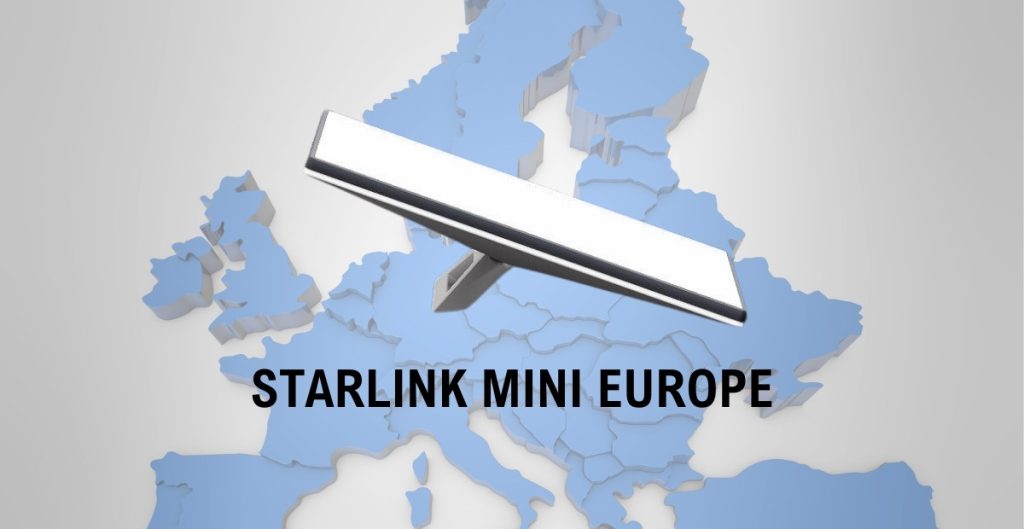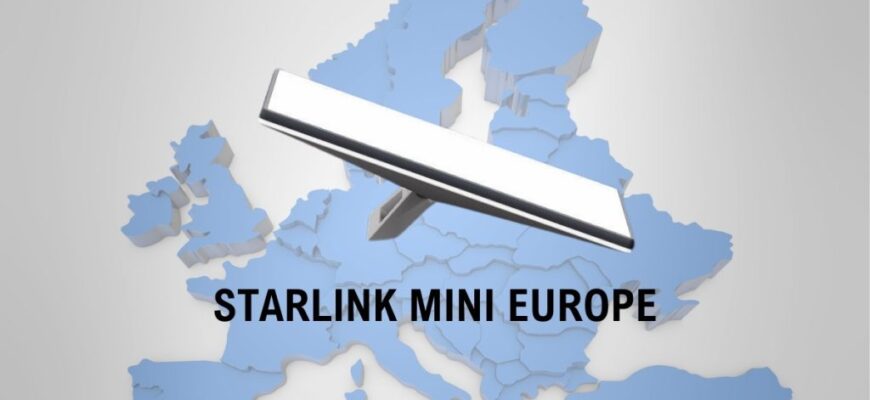Starlink has reshaped how people think about broadband, but the most common question from users across Europe is simple and practical: how much will it actually cost? The answer isn’t a single number. It depends on the equipment you need, the plan you choose, local taxes and import rules, and whether you want service at home, on the move, or for a business.
- What drives the price of Starlink in Europe?
- Where can I buy Starlink?
- Typical pricing tiers and what to expect (approximate)
- How VAT, shipping, and local policies affect the sticker price
- Country snapshots: what costs look like in major European markets
- Official website and how to buy
- Hidden costs and installation extras to budget for
- Using Starlink while traveling in Europe: RVs, portability, and roaming rules
- Business and enterprise: how pricing scales with reliability and SLA
- Comparing Starlink to alternatives in Europe
- How to budget for long-term ownership
- Practical tips to keep costs down
- Performance expectations versus price: what you actually get
- How to check current prices and sign up in Europe
- Real-world example: budgeting for a rural household (illustrative)
- Common questions people ask about Starlink costs
- Should you buy Starlink in Europe? A buyer’s checklist
- Where to get reliable, up-to-date pricing information
What drives the price of Starlink in Europe?
At the most basic level, Starlink costs break down into two buckets: one-time hardware expenses and recurring subscription fees. The hardware is the phased-array antenna and router—what people often call “the dish”—and the subscription is the month-to-month access to the satellite network.
Beyond those two fundamentals, several secondary factors influence the final bill. Local value-added tax (VAT), shipping, customs duties, and optional extras like professional installation or upgraded mounts can add a meaningful amount to the upfront cost.
Where can I buy Starlink?
Service type is another crucial variable. Starlink offers distinct tiers for residential users, mobile/RV customers, business or “premium” users, and maritime or aviation customers. Each tier brings different performance promises and different price points—higher throughput and priority on the network generally cost more.
Finally, geography and demand matter. A dense urban area with lots of Starlink users may encounter slower speeds during peak hours, while a remote mountain community might find the service dramatically better than any landline alternative, which influences perceived value relative to price.
Typical pricing tiers and what to expect (approximate)

Because Starlink’s official prices vary by country and sometimes by currency, it helps to think in ranges rather than absolutes. Below is a practical overview of the common tiers you’ll encounter and approximate cost bands based on publicly available information through mid-2024. Treat these as ballpark figures for budgeting and decision-making.
All figures below are approximate and exclude country-specific taxes, shipping, and any promotional discounts. Always confirm current local pricing on Starlink’s sign-up page for your country.
| Tier | Typical hardware (approx.) | Typical monthly fee (approx.) | Who it’s for |
|---|---|---|---|
| Residential | €450–€700 | €50–€100 | Homes in rural or underserved areas |
| Portable / RV | Same kit or slightly different accessory kits; €450–€800 | €50–€140 (sometimes higher for roaming) | Travelers who need internet in different locations |
| Business / Premium | €2,000–€6,000+ (specialized high-gain hardware) | €400–€2,500+ (priority bandwidth and SLAs) | Offices, critical sites, enterprise use |
| Maritime / Aviation | €5,000–€20,000+ (certified installs) | Varies widely; often high due to bandwidth and mobility | Ships, yachts, and aircraft |
These ranges cover the most common options. If you’re an everyday home user, the upfront cost will usually be the dominant expense; monthly fees are comparable to many fixed-line broadband plans in Europe, though bandwidth and latency characteristics differ.
For businesses or maritime customers, the pricing jumps sharply because Starlink sells capacity, installation, and service-level guarantees tailored to mission-critical connectivity. Those customers get higher priority on the network, but they also pay significantly more.
How VAT, shipping, and local policies affect the sticker price
One of the first surprises for customers in Europe is how much VAT or similar sales taxes increase the cost. European VAT rates differ by country—often between roughly 17% and 27%—and they are typically added to the advertised price at checkout. That means a dish that looks affordable before tax can cost noticeably more on the final invoice.
Shipping and handling are additional line items. Depending on where in Europe you live, Starlink may ship from an EU facility (mitigating customs) or from outside the EU, which can introduce import duties and delays. Some countries require extra paperwork for telecom equipment, adding complexity and sometimes brokerage fees.
If you’re buying for a business, however, VAT can often be reclaimed through standard business accounting processes. That’s important to factor into the effective cost for companies that can deduct VAT or claim it back at tax time.
Finally, local telecom regulations occasionally impose fees or requirements—especially for maritime or aviation installations. In certain countries you’ll need certified installers, frequency coordination, or permits, all of which add to time and cost.
Country snapshots: what costs look like in major European markets
Instead of trying to list every European price point, which changes frequently, here are practical snapshots of how costs differ in representative markets and what to watch for when you sign up.
United Kingdom: Prices are typically displayed in British pounds and include a 20% VAT at checkout. Expect residential monthly fees to be broadly comparable to many EU countries, but check for shipping and adapter costs if ordering accessories. Post-Brexit import rules occasionally affect delivery times and fees.
Official website and how to buy
Germany: German customers see prices in euros, and VAT is currently 19%. Germany’s strong broadband competition keeps expectations high; many buyers compare Starlink’s rural performance to DSL and cable alternatives. Import fees are rare for in-country stock but always verify at checkout.
France, Spain, and Italy: These countries display euro pricing and apply local VAT rates (generally between 20–25%). In tourism-heavy regions, travelers using portable kits should confirm roaming rules and whether Starlink’s acceptable use policy restricts prolonged use away from a registered address.
Nordic countries: High VAT rates and remote geography make Starlink particularly attractive in parts of Scandinavia. However, shipping to remote islands or cabins may add notable logistical cost. In some northern communities, Starlink can be the only practical upgrade from slow DSL.
Hidden costs and installation extras to budget for
Beyond the obvious hardware and subscription, plan for several ancillary expenses that can push the final bill higher. The most common of these are professional installation, extra cabling, mounts for roofs or chimneys, and power conditioning equipment like UPS units.
Professional installation is optional but often recommended for roof-mount setups or when you need to route cable through walls. Prices vary widely—small jobs may run a hundred euros, while slate-roof or complicated commercial installations can cost several hundred more.
Long cable runs, especially when you choose the premium extension or low-loss cables, add material and labor costs. Anchoring hardware, anti-theft mounts, and branded accessories are additional line items and can be worth it in exposed or coastal locations where wind and salt can shorten equipment life.
For users in areas with frequent power interruptions, a battery backup or small UPS will protect equipment and maintain internet access for short outages. Don’t forget to budget for that where power reliability is an issue.
Using Starlink while traveling in Europe: RVs, portability, and roaming rules
Starlink’s portability options allow many customers to take their kit from place to place, but there are conditions and extra costs associated with that flexibility. Some plans are explicitly for stationary residential use and may not permit continuous operation in multiple countries without additional fees.
For RV and portable users, Starlink offers variations of the residential kit that are intended for nomadic use. Mobility or roaming charges can apply if you register your dish in one country and frequently use it in others. The company has clarified its acceptable use policies over time, but the core idea is that portability is supported with a premium.
When crossing borders, be aware of coverage limitations. While Starlink satellites blanket most of Europe, regulatory approvals and service availability can differ regionally. Always check the official coverage map and read the terms for roaming and temporary use in other countries.
Finally, if you depend on Starlink while traveling for work—say, a mobile sales team or tour operator—consider paying for a plan that explicitly supports roaming or purchasing local temporary SIM-based alternatives as backup for critical operations.
Business and enterprise: how pricing scales with reliability and SLA
Businesses consider more than raw speed: they want predictable uptime, priority during congestion, static IPs, and rapid support. Starlink sells this reliability at a premium through upgraded packages that come with service-level agreements (SLAs) and business-grade hardware.
Expect upfront hardware costs for business-grade kits to be significantly higher than residential options, and monthly fees to move into the hundreds—or thousands—for larger sites with high throughput needs. This pricing is intended to reflect reserved capacity and faster problem resolution.
For enterprises weighing Starlink against fiber or leased lines, the calculus often depends on availability and redundancy. In regions where fiber exists, Starlink is typically positioned as a failover or supplement. In truly underserved areas, it may be the primary option, and businesses sometimes accept the higher price for reliable connectivity.
If you run a business, engage Starlink’s sales channel or an authorized reseller before buying. They can provide contract terms, potential volume discounts, and details on static IPs or other enterprise features that affect total cost.
Comparing Starlink to alternatives in Europe

Price alone doesn’t tell the whole story. When evaluating Starlink, compare performance metrics and the reliability you can expect against fixed-line broadband, cable, and mobile (4G/5G) options that are available in your area.
Fixed-line fiber usually offers lower latency and higher guaranteed bandwidth for similar monthly costs, when it is available. Mobile 4G/5G solutions may be cheaper upfront but can suffer from variable coverage and data caps. Starlink’s advantage is consistent coverage in remote or poorly connected places where other options are slow or non-existent.
For many rural households, Starlink’s monthly fee may be comparable to premium DSL packages but offers dramatically better speeds. For urban households with fiber, Starlink is often a secondary or backup option unless the user prioritizes flexibility or redundancy over cost.
Cost-conscious buyers should map the total monthly and upfront expense of each option, including installation and any long-term contracts or data overage charges. This will give a clearer picture of the value per euro spent.
How to budget for long-term ownership
When evaluating the long-term cost, include equipment depreciation and potential replacement cycles. Outdoor hardware endures weather, and over many years you may need replacements or upgrades, particularly if you move between service tiers.
Also consider that satellite networks evolve. Starlink’s hardware and firmware receive updates, and SpaceX periodically revises pricing and plan offerings as the network grows and regulatory landscapes change in Europe. That means monthly fees could change over time—up or down.
If you’re an early adopter in a remote area, calculate break-even points by comparing the upfront investment to the cost and reliability of your current connectivity. Businesses and heavy users should include potential lost productivity from unreliable links when deciding.
Finally, think tax. Businesses can usually offset or amortize hardware costs and reclaim VAT, which improves the financial case versus an individual consumer who bears the full VAT burden.
Practical tips to keep costs down
If price is a concern, several practical strategies reduce the effective cost of Starlink. Buying used or refurbished equipment is one option—secondhand kits often trade hands for noticeably less than new units, though check warranty and condition carefully.
Another approach is community sharing where local groups in small communities share a single connection and split costs. This requires careful setup for legal and performance reasons, but in very low-density areas it can be economical and community-enhancing.
DIY installation and basic mounts can save on labor charges, but only if you’re comfortable with the mechanical and safety aspects of rooftop work. Simple pole mounts and ground mounts are affordable alternatives if a roof install would be complicated or costly.
Finally, watch for promotions, regional pricing changes, and seasonal deals, and factor in VAT reclaim options if you’re buying as a registered business. For travelers, compare short-term alternatives like local SIM-based hotspots to avoid roaming premiums.
Performance expectations versus price: what you actually get
One of Starlink’s selling points is its speed and latency performance compared with older satellite systems. Typical residential download speeds often range from enough for streaming and video calls to speeds comparable with many terrestrial services, depending on your location and network load.
Latency remains higher than fiber but significantly lower than older geostationary satellites, which matters for real-time applications like gaming or videoconferencing. For many rural users, the trade-off is worth it: lower latency and higher speeds than existing options at a similar or slightly higher monthly cost.
However, peak congestion and regional limitations can produce variable throughput. In densely populated areas with many users or during peak evening hours, performance can dip, especially on lower-cost plans that do not offer priority access.
Assessing value is subjective: tourists and mobile users prize portability and coverage; home users prize stable speeds; businesses require predictable uptime and support. Match the plan to your use case rather than choosing based solely on headline price.
How to check current prices and sign up in Europe
The most reliable way to know the exact price for your location is to visit Starlink’s regional sign-up page and enter your address or country. The site will show the equipment cost, monthly fee, and any notices about availability, shipping, or local taxes.
Sign-up usually involves a waiting list or reservation in regions where Starlink is still rolling out. When service becomes available, you’ll receive instructions on purchase, shipping, and activation. Expect a simple activation process—plug in the dish and follow the app-based guided setup—but remember to plan for any physical installation work beforehand.
If you’re a business or need enterprise-grade service, contact Starlink’s sales channels or authorized resellers for quotes, contract terms, and potential discounts. They can also advise on permits or certified installation requirements in your country.
Finally, keep records of receipts and any export/import paperwork—useful for warranty claims and, for businesses, VAT recovery at tax time.
Real-world example: budgeting for a rural household (illustrative)
Imagine a small family living in a rural village without reliable fiber. They want consistent streaming, remote work, and occasional online education for kids. A typical budget might include the dish and router, a modest roof mount and installation, and one monthly subscription.
Upfront hardware plus installation could add to a few hundred euros beyond the advertised kit price—mounting hardware and labor often make up a significant chunk. Monthly fees are then roughly comparable to mid-tier fixed broadband in Europe, though with better upload performance and lower latency than older satellite or mobile options.
If the family compares that cost to the time and productivity lost with unreliable alternatives, many decide Starlink is worth the premium. Others choose a hybrid: keep a mobile data plan for backup and use Starlink as the primary connection.
Every household’s math differs, but this example shows the types of line items to include when you model your own budget.
Common questions people ask about Starlink costs
Will my bill change if I move to another European country? Possibly. Moving between countries typically requires re-registering the dish. Rates, taxes, and roaming rules vary by country, so expect differences in monthly fees and possible additional steps to update your account.
Can I rent or lease a Starlink unit instead of buying? Some third-party services and local resellers offer rental or lease options, which can reduce upfront cost at the expense of higher recurring payments. Use caution and verify warranties and transferability before committing.
How long does the hardware last? Outdoor telecom hardware generally has a multi-year life span if installed properly and protected from severe weather and corrosion. Expect eventual replacements or upgrades over many years, and factor that into long-term budgeting.
Is there a trial or refund period? Refund options have varied by region and time. Always check the local terms of sale for the return window and any restocking or shipping fees tied to cancellations.
Should you buy Starlink in Europe? A buyer’s checklist
Before you commit, run through a short checklist to ensure you’re getting the best fit and value. First, verify official availability and precise pricing on Starlink’s website for your country. That gives you the clearest number for hardware, taxes, and monthly plans.
Second, compare local alternatives—fiber, cable, DSL, and mobile—considering both price and practical performance. Third, decide whether mobility is important and whether you need a business-grade SLA. Finally, budget for installation and possible accessories, and investigate VAT reclaim options if you’re buying as a business.
These straightforward steps save unpleasant surprises and help you compare the total cost of ownership rather than a single headline price. The better prepared you are, the more rational your decision will be.
If you live in or run operations across multiple countries, consult with Starlink’s sales channels or a knowledgeable reseller who understands cross-border rules and can explain roaming implications.
Where to get reliable, up-to-date pricing information
Start with the official Starlink site for your specific country: that’s where the company lists current rates, availability, and supported hardware. For business needs, request a formal quote through their sales contacts to include SLAs and installation costs.
Local resellers and authorized installers are another resource—especially for countries that require certified installation or have specific regulatory hurdles. They can provide region-specific advice and bundled pricing for installation and hardware.
Finally, forums, local community groups, and user reviews are useful for real-world feedback on total costs and hidden fees. But always cross-check anecdotal claims against official sources before making financial commitments.
Starlink is a powerful option for Europeans facing limited terrestrial broadband options. The total cost will depend on hardware, plan tier, local taxes, and installation—so treat advertised prices as a starting point. If you value coverage and relatively low latency in remote areas, Starlink often offers strong value compared with the only available alternatives.
Want to read more about technology and how innovations like Starlink are changing connectivity across Europe and the world? Visit our technology and innovation section at https://themors.com/technology-innovation-news/ for deeper coverage, comparisons, and buying guides.
For additional articles and resources on related topics, check out our main site at https://themors.com/ to explore more material and stay up to date with the latest developments.










